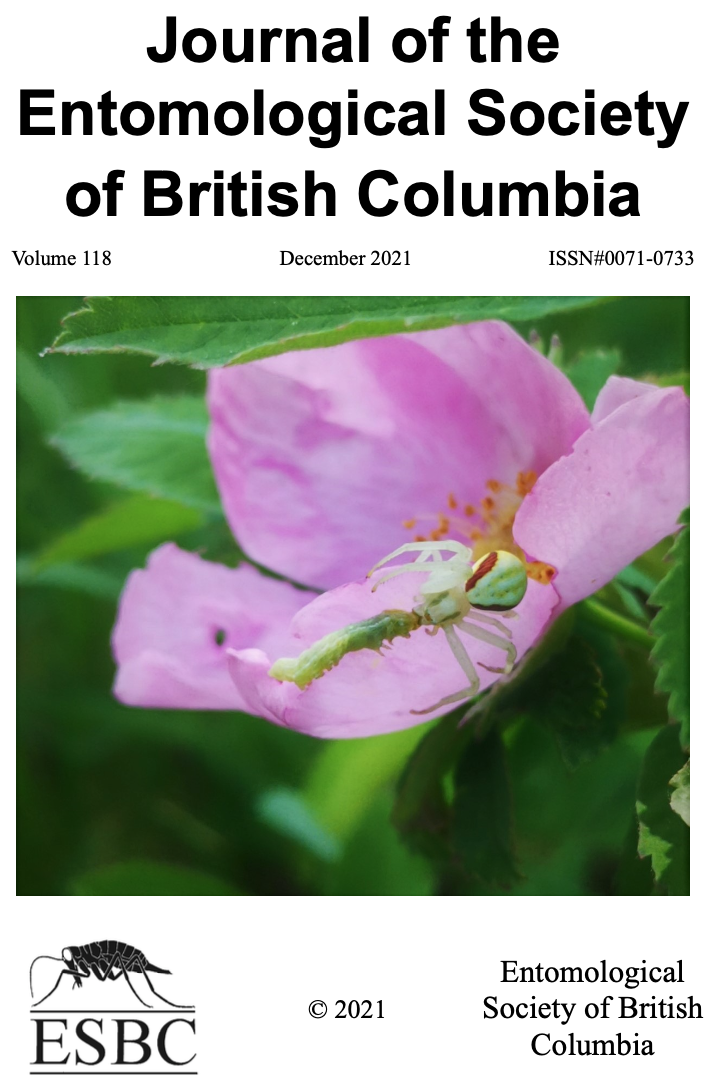Population size estimation for the Warren root collar weevil, Hylobius warreni Wood (Coleoptera: Curculionidae), a pest of regenerating lodgepole pine plantations
Abstract
The Warren root collar weevil, Hylobius warreni Wood (Coleoptera: Curculionidae), is an endemic pest species of conifers, particularly lodgepole pine (Pinus contorta var. latifolia) (Pinaceae), in British Columbia. Larvae feed on the roots and root collars of young trees, resulting in girdling damage and mortality or growth reductions. Population sizes of adult H. warreni have historically been difficult to assess due to a lack of operational sampling methods or chemical attractants for the species. Therefore, most previous population estimates have relied on indirect or incomplete measures of damage by immature individuals. In this study, we tested the Björklund funnel trap to assess its efficacy as a method to estimate H. warreni populations. Funnel traps were placed on all 182 trees in half of a small (~1 ha) lodgepole pine stand over four days and remained in place for 13 days after the last traps were installed. Adult weevils were captured, marked, and released on the bole of the tree on which they had been caught. It is likely that most of the adult weevils in the plot, which was isolated from any nearby lodgepole pine stands, were caught at least once and many were caught multiple times. Population sizes were estimated using both the Schnabel method and the Schumacher and Eschmeyer method, resulting in population estimates of 1.83-2.19 weevils/tree and 731-875 weevils/ha. These measures are within the range of population sizes estimated by previous studies. The results suggest the Björklund funnel trap may be an effective operational tool for population monitoring for this species and may also be an effective tactic in population reduction strategies.
Downloads
Published
Issue
Section
License
Authors who publish with the Journal of the Entomological Society of British Columbia agree to the following terms:
-Authors retain copyright and grant the journal right of first publication with the work simultaneously licensed under a Creative Commons Attribution License that allows others to share the work with an acknowledgement of the work's authorship and initial publication in this journal.
-Authors are able to enter into separate, additional contractual arrangements for the non-exclusive distribution of the journal's published version of the work (e.g., post it to an institutional repository or publish it in a book), with an acknowledgement of its initial publication in this journal.
-Authors are permitted and encouraged to post their work online (e.g., in institutional repositories or on their website) prior to and during the submission process, as it can lead to productive exchanges, as well as earlier and greater citation of published work (See The Effect of Open Access).


